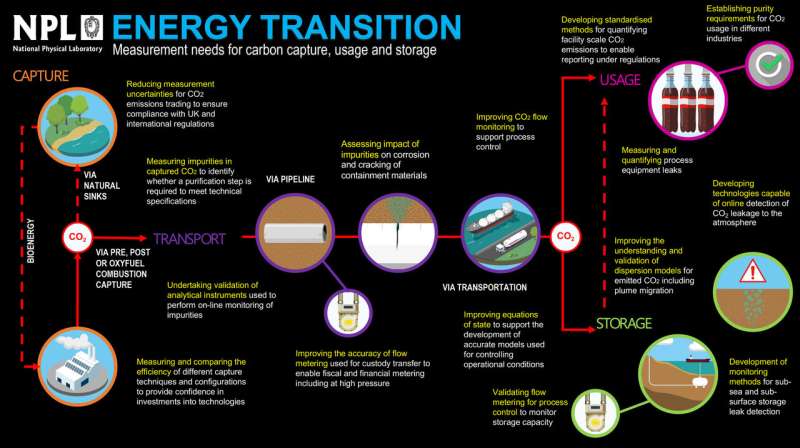Enabling carbon capture, usage and storage

In 2019, the UK became the first major economy to pass legislation that commits to a target of net zero greenhouse gases emissions by 2050, and by 2045 in Scotland. There are many technologies that could assist the UK in reaching these targets, but only one, that regardless of other policy decisions, has been identified as essential: carbon, capture and storage (CCS).
Removing and storing greenhouse gases such as carbon dioxide (CO2) before they can reach the atmosphere will be essential to decarbonising challenging sectors such as energy, cement and steel production. Further efforts are also being made to explore the option of utilizing the captured CO2 in secondary processes to support the financial case of this technology. As such, carbon capture, usage and storage (CCUS) provides an effective and necessary transitionary tool that will enable progress towards net zero.
As detailed in the "10 Point Plan for a Green Industrial Revolution," the UK Government has begun investing in CCUS, with the aim of rolling out CCUS at two sites and removing 10MT of CO2 from domestic emissions by 2030. Industry have also begun to collaborate at industrial clusters, such as Teesside and Humber, to explore the potential of deep decarbonisation technologies such as CCUS.
As the UK's National Metrology Institute, one of NPL's primary roles is understanding where measurement science can assist in supporting areas of growing interest to government and industry. NPL's new report, "Energy Transition: Measurement needs for carbon capture usage and storage," prioritizes crucial measurement needs and challenges that will require addressing. NPL will work with government, industry and academia to ensure these needs and challenges are addressed whilst CCUS continues to gain momentum as a promising technology in the UK's energy transition.
The high priority measurement needs and challenges outlined in this latest report from our Energy Transition series were identified through an industry-wide webinar series run by NPL and our colleagues at TÜV SÜD National Engineering Laboratory, as well as in-depth consultation with key stakeholders across the CCUS industry and a comprehensive literature review.
Richard Barker, head of Energy and Environment, NPL said: "Achieving net zero and limiting global temperature rise is a monumental task for society. Technological and socio-economic innovation in reducing emissions can get us far, but the end-goal can only be realized through carbon capture and long-term storage in one form or another. It has to work—there is no quick fix—which is why NPL is focusing on developing the science and quality system to assure we capture the carbon and can re-use or store it safely for the long term. We hope this report can stimulate all stakeholders in engaging, investing and assuring that CCUS does fulfill its role in achieving the UK ambition of net zero."
More information: 'Energy Transition: Measurement needs for carbon capture usage and storage' : www.npl.co.uk/resources/energy … apture-usage-storage
Provided by National Physical Laboratory



















